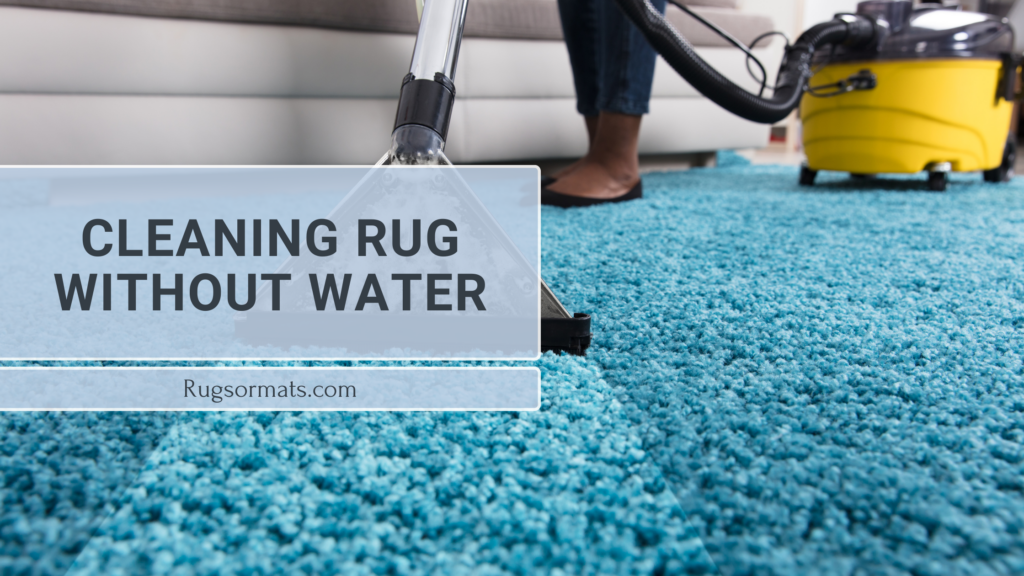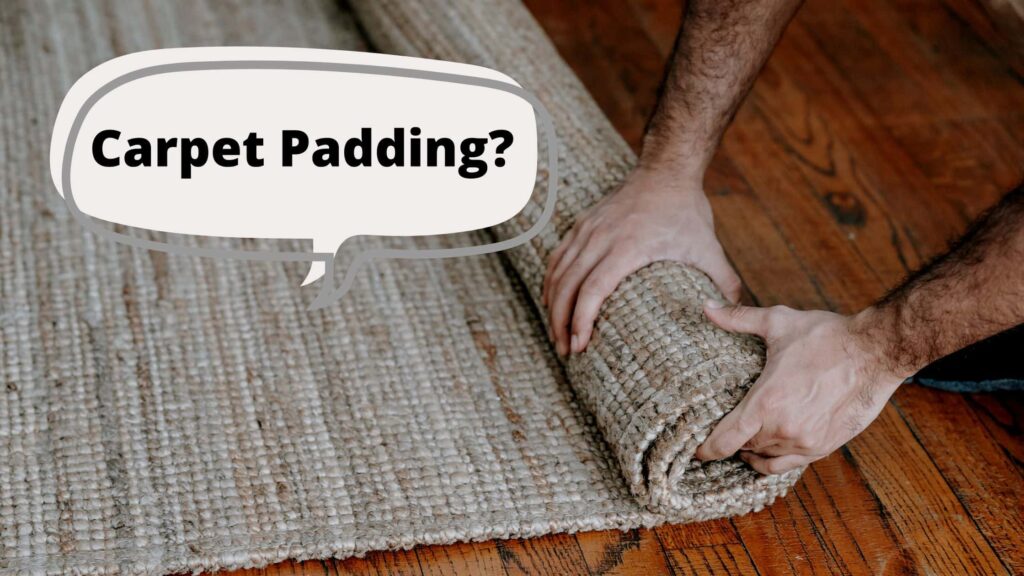If you’re wondering how to clean an area rug without water, you’re definitely not alone. Many people are hesitant to use water on their rugs, fearing that it will damage the fibers or ruin the colors, and in some cases where there are stains that can further spread with water, It is recommended to not use water while cleaning in such situations. Even If you just simply want quick cleaning rather than the complete wash & dry process. You’ll be happy to know that, there are a few quick & easy ways to clean your rug without using any water at all, and to know more about those working ways, all you are required to do is to stick to the article till the end.
No, We are not going to give you basic advice such as vacuuming it regularly, spot cleaning, or something. It is going to be a complete step-by-step guide to making your carpet absolutely clean without using a single drop of water. Although if you get tired while cleaning and you drink some water, that is an exception.
When to avoid using water to clean your rug?
Carpets made of materials like sisal, jute, or silk fibers are hydrophobic materials. continued water contact can lead to the formation of mold and mildew. In these conditions, it is best to avoid using water to clean the rug and instead opt for dry cleaning methods. Cotton rugs are also prone to rot in case of the presence of moisture in the long term. Materials like wool, silk, cotton, etc hold onto moisture. When the spill sits, it can soak into the inside fibers of the rug, leaving you with damp material. While doing it yourself, you need to make sure to dry to rug completely after the wash.
Also check out this in depth guide on properly cleaning area rugs on hardwoord floors.
5 Real Working Methods to clean your carpet without water

Each of these methods will provide a different level of cleaning results, so you can select the one that best suits your needs and preferences. These are easy-to-follow methods where you don’t need to have the skills or equipment of professional dry cleaners.
5. Starting off with a broom
While cleaning the rug with a broom, the first thing you need to do is make sure that the bristles on the broom are soft as per the material of your rug. stiff bristles can cause damage to the rug and hence shouldn’t be used. Once you’ve chosen a soft-bristled broom, you can start sweeping the rug in gentle, circular motions. Sweep from one end of the rug to the other, and then go over it again with back-and-forth strokes. Try to avoid lifting the rug off of the floor too much as you sweep, as this could cause it to tear. When you’re finished sweeping, just a quick vacuum hover would pick up any remaining dirt or debris.
4. Use a Vacuum Cleaner like this
First, make sure that your vacuum cleaner is set to the correct setting preferably slower. For most rugs, the gentle or hand-held setting will work best. Be very careful if you own a particularly delicate rug. In all cases, you need to make sure that your vacuum cleaner has the right attachment set. We would recommend using an upholstery attachment, which is usually softer and gentler than regular floor attachments. Finally, use a slow, back-and-forth motion to vacuum slowly and evenly over the entire surface of the rug, making sure to go over each section several times. Vacuuming on a regular basis is a good way to remove allergens and other dirt trapped in the rug fibers.
3. Baking soda or White Vinegar can also do the job
Baking soda works as an excellent cleaning agent in several scenarios like cleaning kitchen surfaces, extra greasy dishes, mildew from bathrooms and the list goes on. In regards to cleaning rugs, baking soda can help to remove stains and odors. All you need to do is Simply sprinkle the powder onto the rug and let it sit for a few minutes before vacuuming it up. It is also a natural deodorizer, so it can help to freshen up your rug if it has been smelling a bit musty. It is recommended to let the baking soda settle down for at least 6 to 8 hours before the vacuum. You may need to repeat the sprinkle & vacuum process a few times to completely remove the stain or odor.
White Vinegar also provides similar cleaning results even though it is recommended to mix it with water for cleaning purposes but a similar process can be followed with white vinegar to clean an area rug without water. This cleaning method can be preferred if the rug has thick or grease stains.
2. TIme to brush the rug and crush the dirt
To properly clean your rug with a brush & without the use of water, first you need to get a brush with the bristles according to the material of your rug. If your rug is made of delicate material then go with the brush with soft bristles with rug made of hard materials there will be no problem in using brush with hard bristles. Now use the brush to gentl scrub over your rug, make sure to net press it too hard over it or it will cause damage to the fibers of the rug.
It is a good idea to use brush to clean rugs made of natural fibers but keep this in mind that a brush alone won’t be able to deep clean your rug because the bristles can not be forced into every area where dirt is accumulated. A quick hover of vaccum cleaner would take care of the dirt that is left after brushing.
1. Using a dry chemical carpet cleaner
A chemical carpet cleaner is specifically designed to clean rugs and carpets, and it will be much more effective than using a general-purpose cleaner. Firstly do a basic cleaning of the rug with either a brush / broom or vaccum cleaner to remove any dirt and debris from the surface. It is extremely important to make sure that you use the right type of cleaner as per the material of your rug. There are multiple dry checmical carpet cleaners available in the market to choose from.
The dry chemical carpet cleaner comes in powder form and can be used by following these simple steps:
- For wet spills, blot or scrape up any excess, working from the outside of the spill inward to avoid spreading.
- Apply Dry Carpet Cleaner onto soiled area until covered.
- Work the cleaner back and forth down into the soiled carpet fibers with a soft brush or fingertips. Do not scrub.
- For wet spills, after brushing, pack the soiled areas with more dry chemicals.
- Let dry (about an hour) and then vacuum. Allow extra drying time for wet spills.
If traces of soil, spot or spill remain, repeat steps.


![How to Clean Area Rugs on Hardwood Floors? [ Don’t do this ]](https://rugsormats.com/wp-content/uploads/2022/09/How-to-Clean-Are-rugs-on-Hardwood-Floors-min-1024x576.jpg)